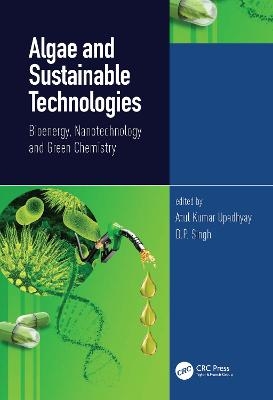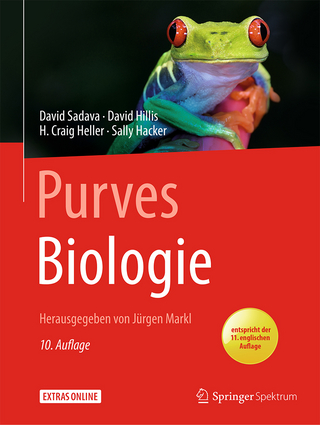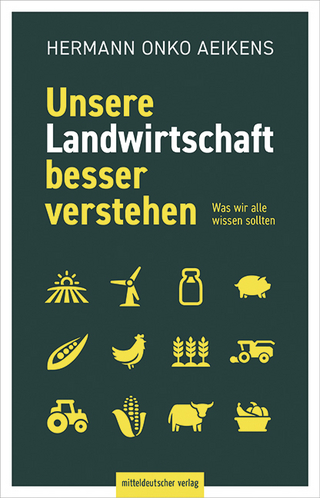
Algae and Sustainable Technologies
CRC Press (Verlag)
978-0-367-43225-6 (ISBN)
Algal and sustainable technologies: Bioenergy, Nannotechnology and Green chemistry is an interdisciplinary overview of the world’s major problems; water scarcity, clean environment and energy and their sustenance remedy measures using microalgae. It comprehensively presents the way to tackle the socio-economic issues including food, feed, fuel, medicine and health and also entails the untapped potential of microalgae in environmental management, bioenergy solution and sustainable synthesis of pharmaceutical and nutraceutical products.
This book basically emphasizes the success of algae as wonderful feed stocks of future and provides upto date information and sustainable and recreational outlook towards degrading environment and energy crisis. Applicability of fast emerging algae based nanotechnology in bioremediation and production of nanoparticle (AuNP, AgNP etc) are beautifully described along with latest research and findings.
Key features:
The "waste to best to income" strategies are the main concern of the book and take the edge off the problem of pollution, energy and income.
Elucidate the sustainable phycoremediation and nanoparticle functions as low cost approach for various ecosystem services.
Information regarding pharmaceuticals, nutraceuticals and other algae based value added product synthesis and fate are comprehensively discussed.
Knowledge resource, latest research, findings and prospects presented in an accessible manner for researchers, students, eminent scientists, entrepreneurs, professionals and policy maker.
Atul Kumar Upadhyay is a scholar in the field of environmental science. He completed his PhD in the field of phytoremediation and constructed wetland technology at the CSIR-National Botanical Research Institute, Lucknow, jointly with Kumaun University, Nainital, India. He earned his postgraduation degree from Dr RML Avadh University, Faizabad, India, in the subject of botany. Dr Upadhyay has performed research in the construction and design of wetlands and the plant-based management of water and soil pollution in different states of India, and he has been involved in different activities related to river water rejuvenation, wastewater treatment, wetland design and soil management and pollution control. During his research, Dr Upadhyay has published a number of research papers, articles and chapters in the peer-reviewed journals of national and international repute. He has also published one author book, edited two books from Springer. Currently, Atul Kumar Upadhyay is working as a post-doctoral fellow (UGC-DSKPDF) in the Department of Environmental Science, BBAU (a central university), Lucknow, India, and involved in working on the different aspects of algal-based sustainable phytoremediation, biofuel and bioenergy production. Prof. D. P. Singh, Former Head and Dean of the School for Environmental Sciences, Babasaheb Bhimrao Ambedkar University, Lucknow, India, is an eminent scholar in the field of environmental science. He earned his PhD from the Department of Botany, Banaras Hindu University, Varanasi, India. He has worked extensively in the area of wastewater treatment, microbiology, stress physiology, bioremediation and alternative energy options. He has received several honours and awards to his credit, including more than 135 research publications in high impact factor journals of national and international repute. He has supervised more than 24 PhD students and several MSc and MTech students for their research work. He has delivered invited lectures in different seminars and symposia and served as a principal investigator for several governments funded projects. Dr Singh has published five books in the fields of environmental microbiology and biotechnology, stress physiology and sustainable management of soil and water and edited more than ten books with a scientific background with Springer, Elsevier, CRC etc.
Contents
Foreword...........................................................................................................................................vii
Preface...............................................................................................................................................ix
About the Editors...............................................................................................................................xi
List of Contributors......................................................................................................................... xiii
Chapter 1 Algae as a Sustainable Resource for Green Economy and Deteriorating
Environment..................................................................................................................1
Atul Kumar Upadhyay
Chapter 2 Energy Reserves in Microalgae: Biomass Production and Genetic Engineering....... 11
Atul Kumar Upadhyay and D. P. Singh
Chapter 3 Biotechnological Application of Algae in Pharmaceuticals Industries with
Special Reference to Omega-3 Fatty Acid and Human Health...................................29
R. Singh, A. K. Upadhyay, P. Chandra and D. P. Singh
Chapter 4 Eco-Friendly and Eco Technological Approaches in Treatment of Wastewater
by Different Algae and Cyanobacteria........................................................................ 43
Dig Vijay Singh, Atul Kumar Upadhyay, Ranjan Singh and Davendra Pratap Singh
Chapter 5 Cultivation of Microalgae in Industrial Effluent for Simultaneous Pollutant
Removal and Biofuel Production................................................................................65
Rangabhashiyam S
Chapter 6 Wastewater Treatment Using Microalgae Bacterial Consortium................................85
Ghulam Mujtaba, Muhammad Rizwan, Sheraz Ahmed Memon, Haresh Kumar
and Jessica Lawrence
Chapter 7 Algae-Based Biofuel Production as a Part of an Industrial Cluster............................97
Uneza S. Nanabawa, Anupama Shrivastava, Poonam Singh and Sandhya Mishra
Chapter 8 Role of Algae in the Decolourization of Wastewater................................................ 115
Sunil Kumar, S. K. Mandotra, C. Sharma, A. S. Ahluwalia and M. U. Charaya
Chapter 9 An Overview of Industrial Wastewater Management Using Integrated Algal
Technologies.............................................................................................................. 141
K. Dhandayuthapani, V. Sarumathi, Ravindra Prasad, Imran Pancha, Sanjay
Kumar Gupta and Arvind Kumar Nema
Chapter 10 Biosynthesis of Gold Nanoparticles and Their Potential Application: With
Special Reference to Algae and Cyanobacteria........................................................ 173
Shehzadi Nafe Aziz, Nadeem Ahmad and Tasneem Fatma
Chapter 11 Biogenic Synthesis of Nanoparticles From Algae and Its Various Applications...... 185
Mridula Chaturvedi, Tarun Yadav and Sanjay C. Masih
Chapter 12 Bioactive Compounds from Microalgal Source as UV Protective Agents............... 201
Sonam Dwivedi and Iffat Zareen Ahmad
Chapter 13 Flavonoids as Food Supplement with Special Reference to Algae and
Cyanobacteria............................................................................................................ 231
Rakhshan Ahmad and Tasneem Fatma
Chapter 14 Algae as a Source for Nutraceutical Products: Scope and Perspective.....................245
Sonal Dixit, Neha Vishnoi and D. P. Singh
Chapter 15 Role of Salicylic Acid in Mitigation of Pesticide Toxicity in Cyanobacteria............ 271
Haleema Naaz, Nida Jamil Khan and Tasneem Fatma
Chapter 16 Perspectives on In Silico Investigation of the Drug Delivery Properties of
Microalgae................................................................................................................. 281
S. Saurabh and D. Ozcimen
Chapter 17 Paracetamol Toxicity on Cyanobacteria....................................................................309
Samreen Fatima and Tasneem Fatma
Index............................................................................................................................................... 317
| Erscheinungsdatum | 10.11.2020 |
|---|---|
| Zusatzinfo | 45 Tables, black and white; 40 Illustrations, color; 13 Illustrations, black and white |
| Verlagsort | London |
| Sprache | englisch |
| Maße | 178 x 254 mm |
| Gewicht | 848 g |
| Themenwelt | Naturwissenschaften ► Biologie |
| Technik ► Lebensmitteltechnologie | |
| Technik ► Umwelttechnik / Biotechnologie | |
| ISBN-10 | 0-367-43225-0 / 0367432250 |
| ISBN-13 | 978-0-367-43225-6 / 9780367432256 |
| Zustand | Neuware |
| Haben Sie eine Frage zum Produkt? |
aus dem Bereich


